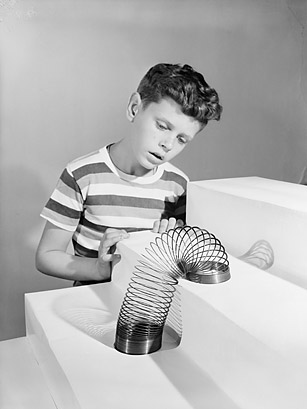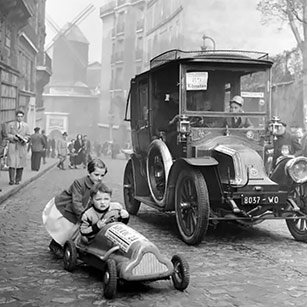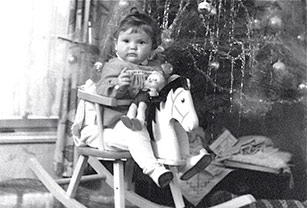
Slinky
A new exhibit on the history and cultural influences of toys will open in the museum’s upstairs exhibit gallery on Wednesday, April 19, 2017. Toys are important parts of our past and can be an enjoyable means of training young children for life in society. The act of children’s play with toys embodies the values set forth by the adults of their community seen through a child’s perspective. Within cultural societies, toys are a medium to enhance a child’s cognitive, social, and linguistic learning.
 Playing with toys can also help a child grow up and learn about the world around them. Younger children use toys to discover their identity, help their bodies grow strong, learn cause and effect, explore relationships, and practice skills they will need as adults. In some cultures, societies utilize toys as a way to enhance a child’s skill set within the traditional boundaries of their future roles in the community. In Saharan and North African cultures, play is used to develop skills like hunting and herding, for example. Value is placed on preparing a child for their future and allows the child to create a personal interpretation of the adult world.
Playing with toys can also help a child grow up and learn about the world around them. Younger children use toys to discover their identity, help their bodies grow strong, learn cause and effect, explore relationships, and practice skills they will need as adults. In some cultures, societies utilize toys as a way to enhance a child’s skill set within the traditional boundaries of their future roles in the community. In Saharan and North African cultures, play is used to develop skills like hunting and herding, for example. Value is placed on preparing a child for their future and allows the child to create a personal interpretation of the adult world.
 Children play with whatever they can find, such as sticks and rocks, but the golden age of toy development was at the turn of the 20th century. Wages were rising steadily in the Western world, allowing even working-class families to afford toys for their children. Industrial techniques of precision engineering and mass production made it possible to meet this rising demand. Intellectual emphasis was also increasingly being placed on the importance of a wholesome and happy childhood for the future development of children.
Children play with whatever they can find, such as sticks and rocks, but the golden age of toy development was at the turn of the 20th century. Wages were rising steadily in the Western world, allowing even working-class families to afford toys for their children. Industrial techniques of precision engineering and mass production made it possible to meet this rising demand. Intellectual emphasis was also increasingly being placed on the importance of a wholesome and happy childhood for the future development of children.
 Toy Story will explore these cultural influences and display some of the most popular 20th century toys, including Tonka Trucks, Hoola Hoops, Doll Houses, Yo Yos and Slinkies. Please join us for a trip back to childhood.
Toy Story will explore these cultural influences and display some of the most popular 20th century toys, including Tonka Trucks, Hoola Hoops, Doll Houses, Yo Yos and Slinkies. Please join us for a trip back to childhood.












